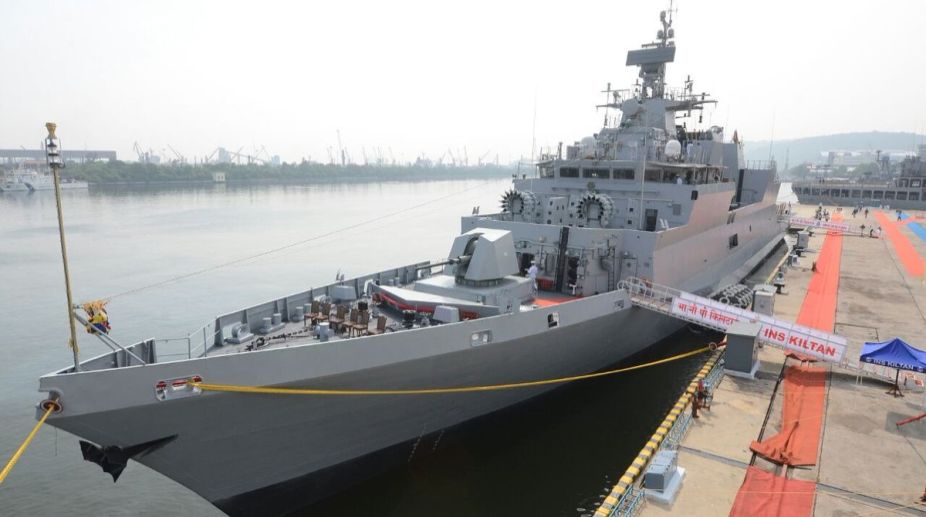Riding piggy-back on military success-stories is something about which the present government does not feel diffident. Last year’s tactical strikes against jihadi launch-pads across the LOC in J&K ~ the much hyped “surgical strikes” ~ continue to be hailed as evidence of being tough with Pakistan, although infiltration and cross-border fire assaults continue unabated. Now the commissioning of the INS Kiltan is being projected as evidence of the “make in India” programme yielding rich dividends in the defence-production sector.
Without in any way undermining the efforts of the Indian Navy’s in-house design bureau and Garden Reach Shipbuilders and Engineers, Kolkata, the Defence Minister went a trifle overboard when in her “commissioning address” she hailed the missile-corvette (which some professionals insist is without critical necessities) as “shining armour in our ‘make in India’ programme as it is totally built here.”
It may be a case of splitting hairs to point out that some 20 per cent of the anti-submarine unit’s components and sub-systems are “got abroad” (universally normal in warship-building), but there can be no overlooking the reality that the keel of the vessel was laid down long before the Modi-edition of the NDA ascended Raisina Hill.
The third of a series of such corvettes, INS Kiltan is part of a project initiated about a decade ago ~ well in advance of a slogan-obsessed regime chanting “skilled India, digitized India, make in India…” By attempting to give her government political credit for action launched by its predecessor, Nirmala Sitharaman risks jeopardising the generally-favourable reputation she has earned for herself since assuming the key office in South Block; and needs to remain on guard against misleading political advisers ever-keen to hijack the achievements of the apolitical (with odd exceptions) defence community.
The faujis tend to perceive the government as a continuing entity, changes in its political complexion, fortunately, are of limited concern to them. The commissioning of INS Kiltan is the most recent chapter in a saga that opened way back in 1972 with INS Nilgiri, the first domestically-constructed modern warship entering operational service.
While that Leander Class frigate was of Britishdesign, the in-house team effected major improvements in the latter vessels of that series. They were followed up by the Godavari class, Delhi class, and an entire array of vessels that have been admired in naval circles the world over. Apart from increasing use of “stealth technology”, the shipyards engaged in warship-building have ventured into the construction of submarines and aircraft carriers.
The building of smaller craft, no less-important to maritime security, has not been neglected. In fact India now has the technological capacity to design most of its warships, though production bottlenecks and “diplomatic” considerations still lead to orders being placed on foreign yards. That “heroic” accomplishment must not be politically sullied.






